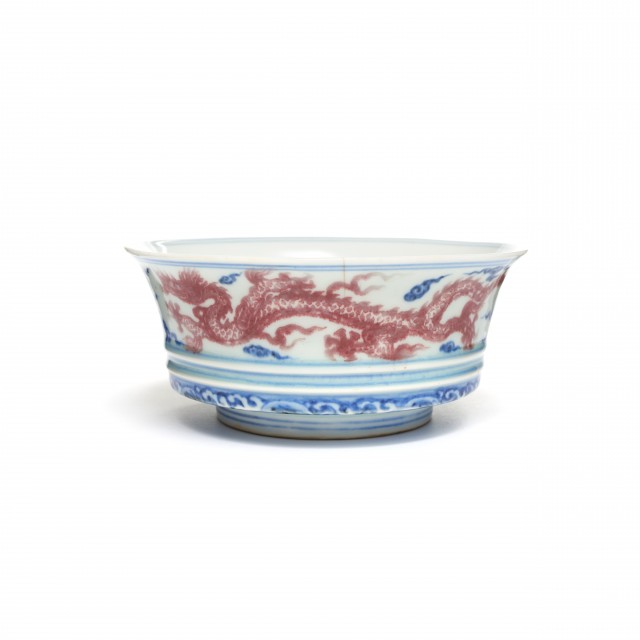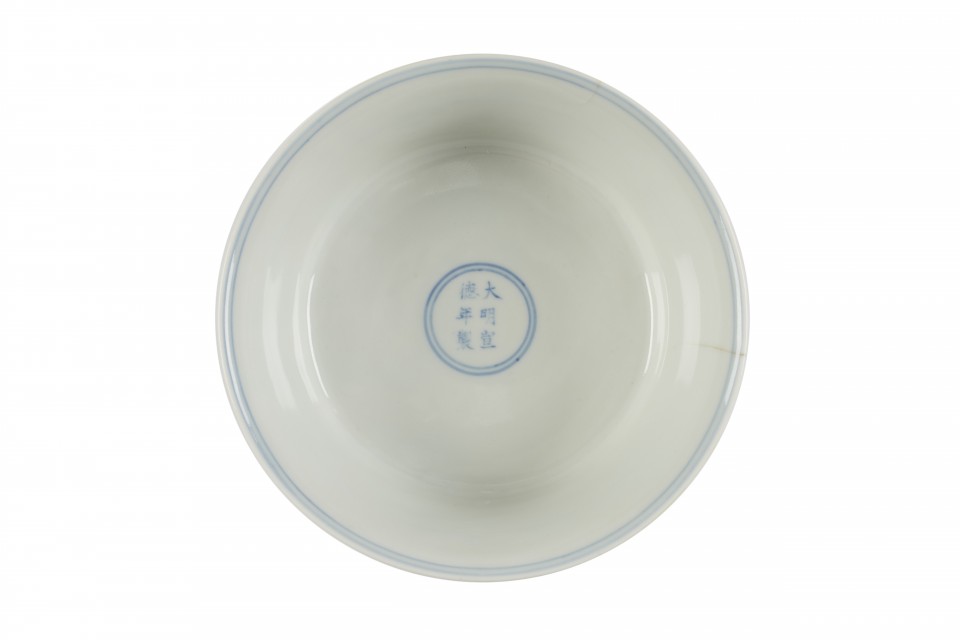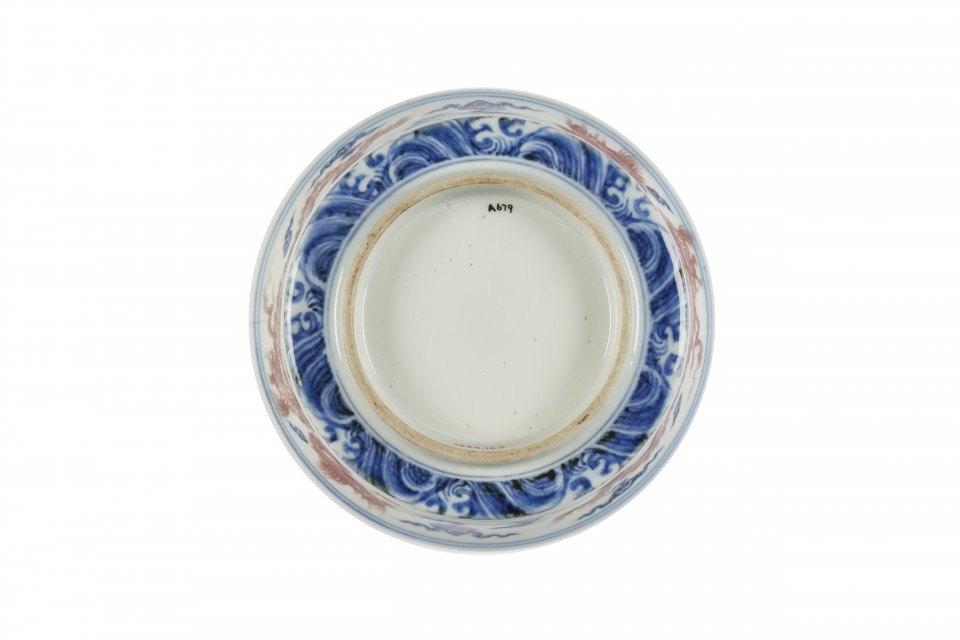Carinated Bowl

Photography by Synthescape, Digital image © Asia Society

Photography by Synthescape, Digital image © Asia Society

Photography by Synthescape, Digital image © Asia Society
Carinated Bowl
Xuande era, 1426-1435
China, Jiangxi Province
Porcelain painted with underglaze cobalt blue and copper red (Jingdezhen ware)
H. 3 x Diam. 6 7/8 in. (7.6 x 17.5 cm)
Asia Society, New York: Mr. and Mrs. John D. Rockefeller 3rd Collection, 1979.167
Provenance
John D. Rockefeller 3rd, New York, NY; acquired through John Sparks, Ltd., London from Sotheby’s London, October 15, 1968, in 1969.
The Asia Society, New York, NY, bequest of John D. Rockefeller 3rd, New York, NY, 1979.
Licensing inquiries
The six-character reign mark on the interior of this small bowl reads, "made during the Xuande reign of the great Ming dynasty" (da Ming Xuande nian zhi). The bowl originally had a cover, and its shape suggests that it once may have been part of a larger set of dishes for dining. Two different underglaze colors were used to paint the motif of dragons (copper red) chasing flaming pearls among waves (cobalt blue) on the exterior of the bowl. The combination of cobalt blue and copper red indicates that this bowl was considered a particularly luxurious piece, while the depiction of the dragons as having five claws shows that it was intended for the use of the emperor. Although dragons had long been used as symbols of imperial power in China, in the 15th century the motif of a dragon chasing a pearl became a prominent imperial symbol in the arts. The flaming pearl might represent the sun or the moon -- either would be an appropriate symbol of the power of the emperor.



